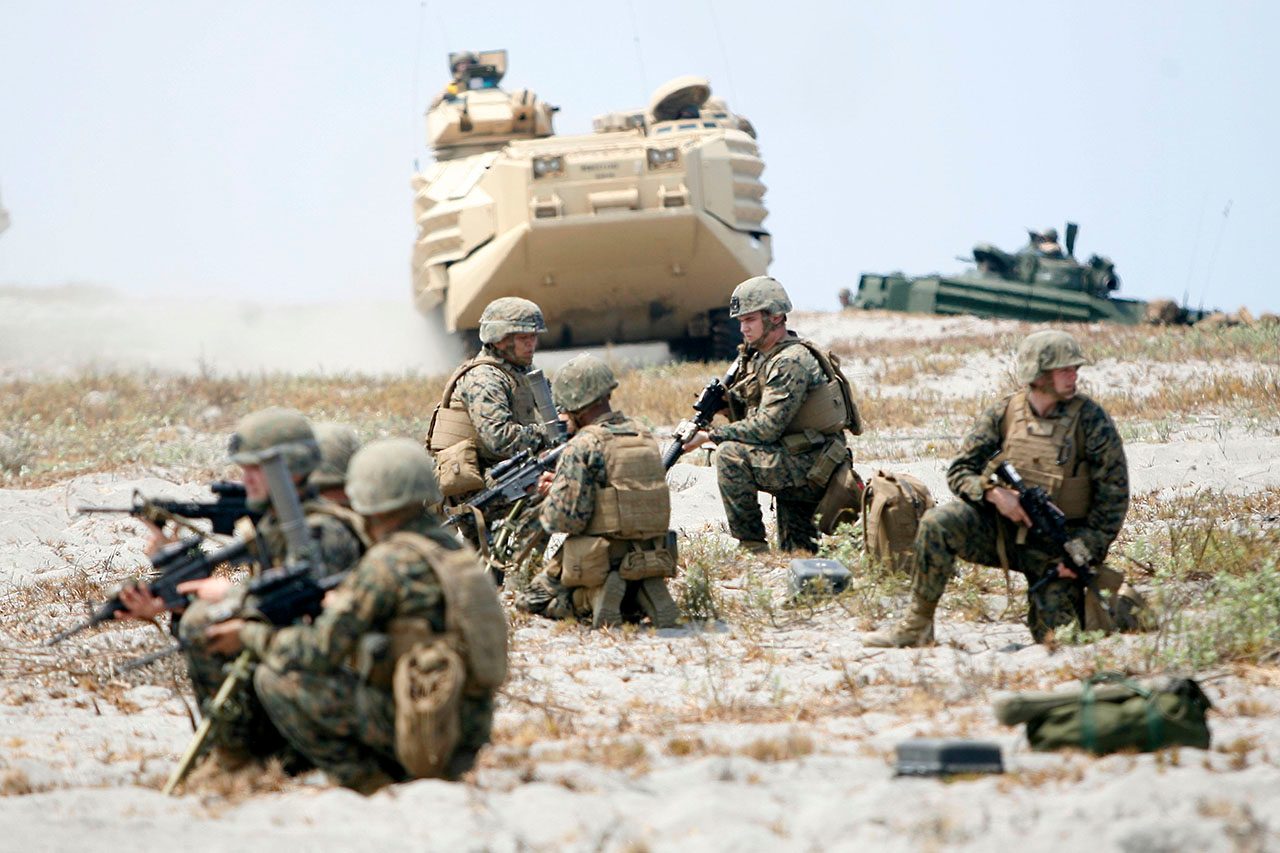SUMMARY
This is AI generated summarization, which may have errors. For context, always refer to the full article.

How about we do this? Let our Marines attack the Chinese base now being built in the West Philippine Sea?
A friend of me suggested this impish idea in a conversation on several topics where we challenged each other to think outside of the box (one result of this was an essay on Manny Pacquiao). He added that the only way for the country to see if its mutual defense treaty with the United States will work was to go to war. Military treaties are, after all, agreed upon by allies to respond to two situations: prevent a war from happening and compel the enemy to sit down and talk, or else face the wrath of a unified, much stronger alliance. Alternatively, he argued, if the enemy is adamant about its claims, then the treaty’s utility for both allies can be tested by going to war against this belligerent opponent.
That, he said, should be how we approach this problem with China.
For it is that time again for the annual PH-US joint Balikatan exercises – that big dance where US and Filipino Marines work hand-in-hand to test their ability to work together. There is the beach assault by both forces, which are then followed by free range firing on an imaginary enemy involving helicopters and jets in support of combat maneuvers. Non-military activities range from teaching US marines jungle survival (Youtube is full of videos of Philippine marines showing Americans how to drink water from a vine and prepare snake’s meat) to the rebuilding of public school buildings and the paving of village roads by the resource-rich Americans.
As these “military actions” play out, commanders from both sides go into spin mode and in press conferences repeatedly assure Filipinos that the alliance is strong and unwavering. The US commander repeats the pledge his predecessor made of how committed the US government is in defending Philippine national interests should external enemies threaten these.

However, my friend maintained, how can we be assured that that promise will be fulfilled unless we place the allies in a situation of war? Hence, he suggested that our commanders veer away from the script and in the middle of the Balikatan exercise suddenly launch an attack on Chinese forces. “And let us see what happens?”
I asked him why this turn to the bellicose and his answer was – as expected – outside of the box: “The usual response of the communist groups, academics, and politicians is to abrogate the treaty, an end to the warmongering by the administration, and then accuse the latter of being a ‘puppet of US imperialism.'”
However, this has been found to be inadequate as slogans for popular mobilization. Almost always, the protests one sees at the US embassy over these treaties are pathetically small. Compared to the pickets, the lines for visa application or interview are longer!
These are ineffective because they are used solely for propaganda purposes. These anti-treaty forces know that their “demands” will never get the Philippine and US governments to terminate the military agreements. They know that only a regime change – via revolution or a coup – can create the possibility of termination. So they develop this illusion that somehow, slogans like “Ibagsak ang imperyalismong Amerikano (Down with American imperialism)” or “Rehimeng Aquino, tuta ng mga Kano! (Aquino regime, lapdog of the Americans!)” will draw the interests of “the people,” and open their minds to recruitment. The truth is that no one among “the people” has any interest at all in learning more about these slogans.
And the status quo ante persists, argues my friend.
So instead of waiting for America to act, or whining at their doble cara, he suggests the Philippines take the initiative and confront the vastly superior Chinese ships in the shoal. The USS Lassen is already there, having approached China’s 12-nautical zone. The Philippines can send those used US Coast Guard Hamilton cutters to tag along the Lassen and then when the time is right, send a few volleys towards the shoal. Their pride will compel the Chinese to fire back. Question then is will the Lassen come to our navy ships’ rescue?
I would think so, insists my friend. US and Philippine Presidents and senior officials can confuse the public with their vague assertions, but on the field (in this case, the sea), commanders may obey orders but when crunch time comes and an ally is pinned down, there will be no question that the other ally would act. So I predict that the Lassen’s captain will retaliate in our behalf.
Once the firefight escalates, then we will really see how much the United States values the mutual defense treaty she signed with the Philippines in 1951. I asked my friend if the US will do so and his answer was curt: It will not.
This is an interesting idea that I will leave readers to mull over. – Rappler.com
Patricio N. Abinales is an OFW.
Add a comment
How does this make you feel?
There are no comments yet. Add your comment to start the conversation.